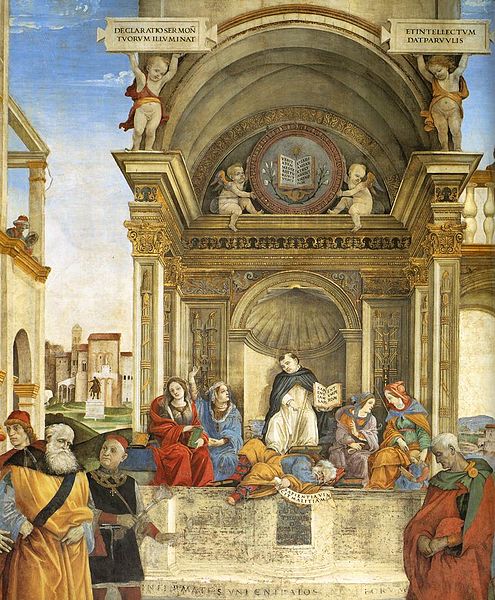
A detail from Filippino Lippi’s late fifteenth-century fresco, held in the Carafa Chapel of the Santa Maria sopra Minerva in Rome, venerating the thirteenth-century monk and theologian St Thomas Aquinas (seated in the centre). The influence of Christianity on the development of the western mind has been a topic of interest in the Freethinker of late: see my interview with the scholar Charles Freeman, which (inter alia) deals with this question, and Nick Cohen’s recent essay arguing that western values (whatever these might be) are not inherently Christian.
Freeman discusses Lippi’s painting at the beginning of his 2003 book The Closing of the Western Mind, and in doing so explains why it is germane to the now very prominent debate over Christianity’s role in the intellectual evolution of the western world:
‘The monk crushes a scowling old man beneath his feet. The old man is a personification of evil and he clutches a banner with the Latin inscription “Wisdom conquers evil”. The monk himself is none other than the great Dominican theologian Thomas Aquinas (c. 1225-74). Above him in a roundel are the verses from the book of Proverbs with which he chose to begin one of his finest works, the Summa contra gentiles, “a summary of the case against the heretics”, “For my mouth shall speak truth and wickedness is an abomination to my lips.” Also above him, on panels held by putti, appears a declaration of the importance of the revealed word of God: “The revelation of Thy words gives light; it gives understanding to the simple.” The most important text, however, must be that which Thomas has selected to hold in his left hand; it is from the apostle Paul, SAPIENTIAM SAPIENTUM PERDAM, “I will destroy the wisdom of the wise.” As this book will suggest[,] the phrase, supported by other texts of Paul which condemn the “empty logic” of “the philosophers”, was the opening shot in the enduring war between Christianity and science.
Here Thomas is in a position of authority, defending the revelatory power of God against “the wisdom of the wise”. Yet this “wisdom” is allowed some place. Alongside the saint sit four further personifications, in order from the left, those of Philosophy, Theology, Grammar and Dialectic. Philosophy (largely the study of formal logic), grammar and dialectic (the art of disputation) were the first subjects of the traditional medieval curriculum. However, though they may appear at ease alongside Thomas, they are clearly subordinate to the word of God, as preliminaries that had to be mastered before any advanced study in theology, the longest and most challenging course, could begin. Theology’s prominence over the others is shown here by her crown and her hand raised to heaven.
Below Thomas and his intellectual companions two groups of men stand back from a clutter of books and manuscripts. A debate has been in progress and it seems that its settlement has resulted in a disposal of discarded arguments. The reference here is to the fourth and fifth centuries when the [Roman] empire, newly if not fully Christianized, was rocked with debate over the nature of Jesus and his relationship with God. The Arians (followers of Arius) claimed that Jesus was a distinct and lower creation, divine perhaps but not fully God. At the opposite extreme the followers of Sabellius, a Roman cleric, claimed that the Godhead was one and Jesus on earth was only a temporary manifestation of that Godhead, in no way distinct from it. In the fresco Arius stands on the left, a serious and thoughtful man as tradition records, wearing yellow robes. In front of him a book bearing the words of his thesis, “there was a time when the Son was not”, lies condemned. Sabellius, shown as an austere Roman in a red robe, gazes down on his work with its own heretical assertion, that the Father is not to be distinguished from the Son, likewise condemned. Other heretics, including the Persian Mani (to the right of Sabellius in a furred hood [not visible in the detail above]), to whose sect St Augustine belonged before his conversion to Christianity, are in the crowd. These heretics had all been subject to specific refutation by Thomas in his works. What Thomas now upholds is the final solution to the issue, the doctrine of the Trinity. God the Father, Jesus the Son and the Holy Spirit have distinct personalities within a single Godhead. It is a doctrine, as Thomas himself wrote in his other great work, the Summa theologiae, that cannot be upheld by reason, but only through faith.
The “triumph of faith”, as depicted here by the Florentine painter Filippino Lippi, reflects the theme of this book. “Faith” is a complex concept but whether it is trust in what cannot be seen, belief in promises made by God, essentially a declaration of loyalty or a virtue, it involves some kind of acquiescence in what cannot be proved by rational thought. What makes faith a difficult concept to explore is that it has both theological and psychological elements. At a psychological level one could argue that faith must exist in any healthy mind. If we cannot trust anyone, have any optimism that all will be well, we cannot live full lives. Such faith will include positive responses to individuals, as evinced by those who met and travelled with Jesus. Here we cross a conceptual boundary because faith in Jesus, and in particular in the saving nature of his crucifixion and resurrection as taught by Paul, was of a different order from faith in the general sense that “all will be well”. With the elaboration of Christian doctrine faith came to mean acquiescence in the teachings of the churches – to be seen as a virtue in itself.
In the fourth and fifth centuries AD, however, faith in this last sense achieved prominence over reason. The principles of empirical observation or logic were overruled in the conviction that all knowledge comes from God and even, in the writings of Augustine, that the human mind, burdened with Adam’s original sin, is incapable of thinking for itself. For centuries any form of independent scientific thinking was suppressed. Yet, and this is the paradox of the Carafa fresco, it was actually Thomas, through reviving the works of Aristotle, who brought reason back into theology and hence into western thought. Once again it was possible for rational thought and faith to co-exist. We will meet the other Thomas, the Thomas who champions reason alongside faith, in the final chapter of this book.’
Enjoy this image of the week? Subscribe to our free fortnightly newsletter for the latest updates on free thought. Or make a donation to support our work into the future.



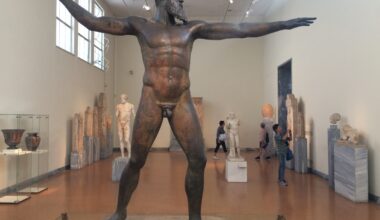
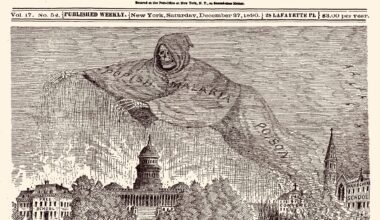

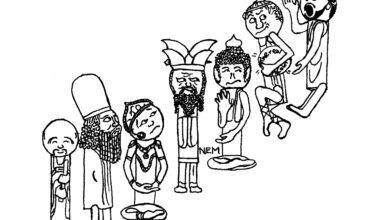
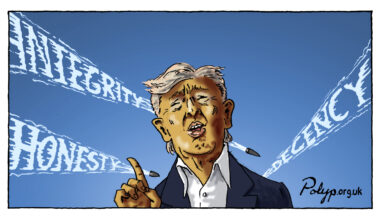
Your email address will not be published. Comments are subject to our Community Guidelines. Required fields are marked *
Donate